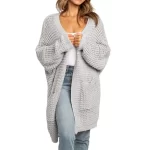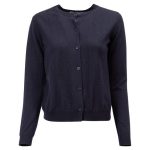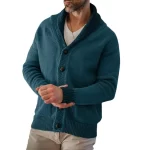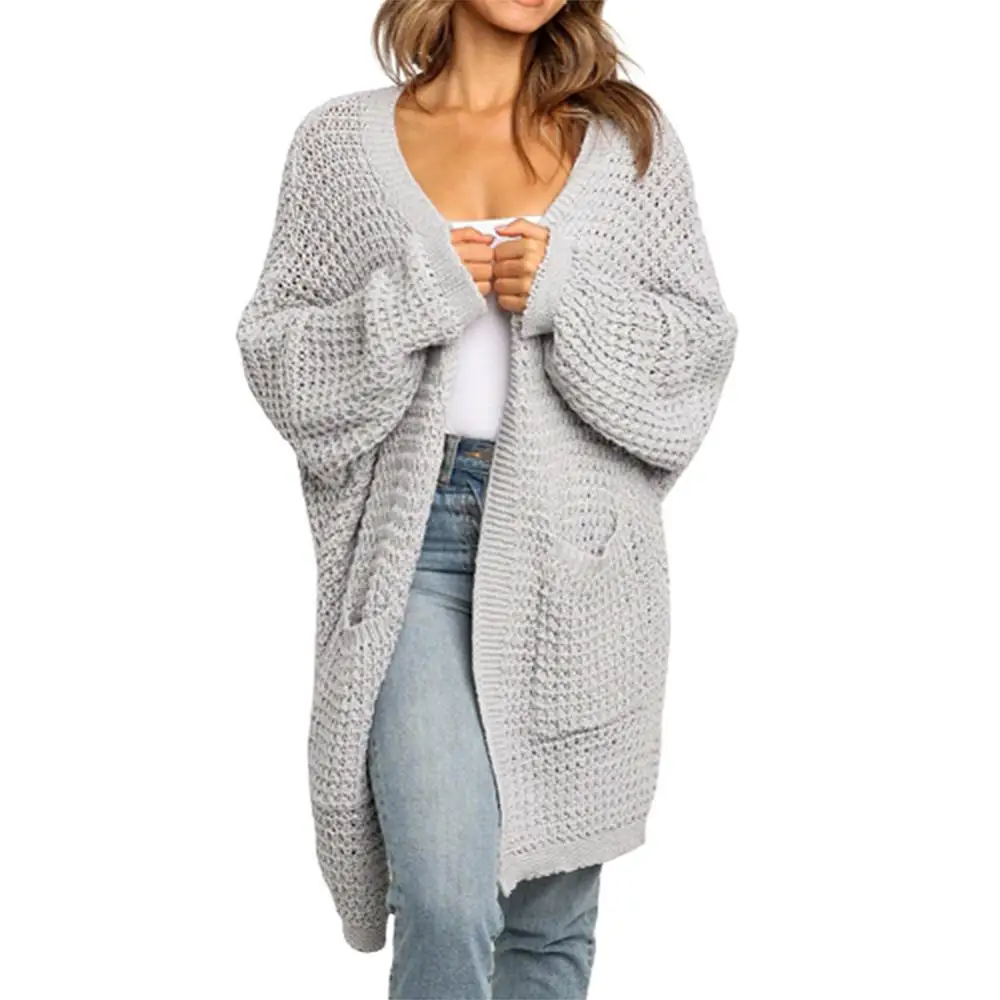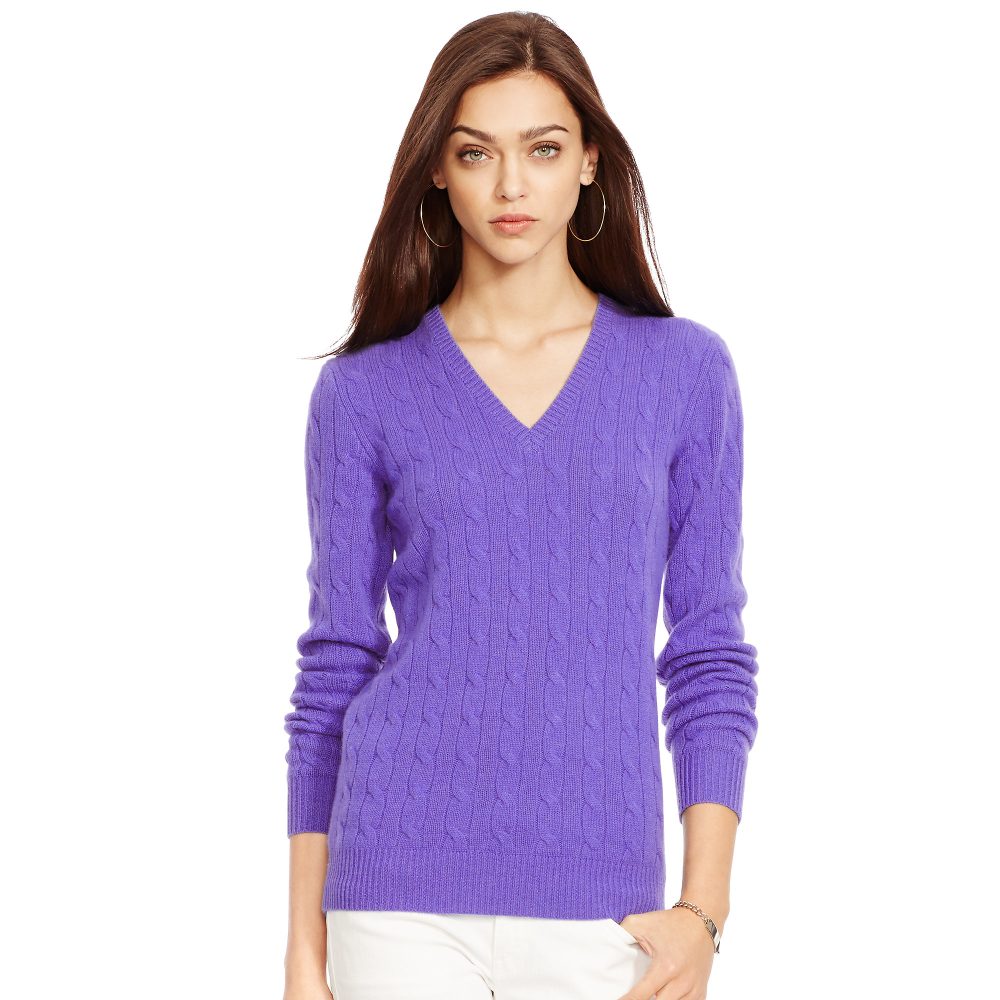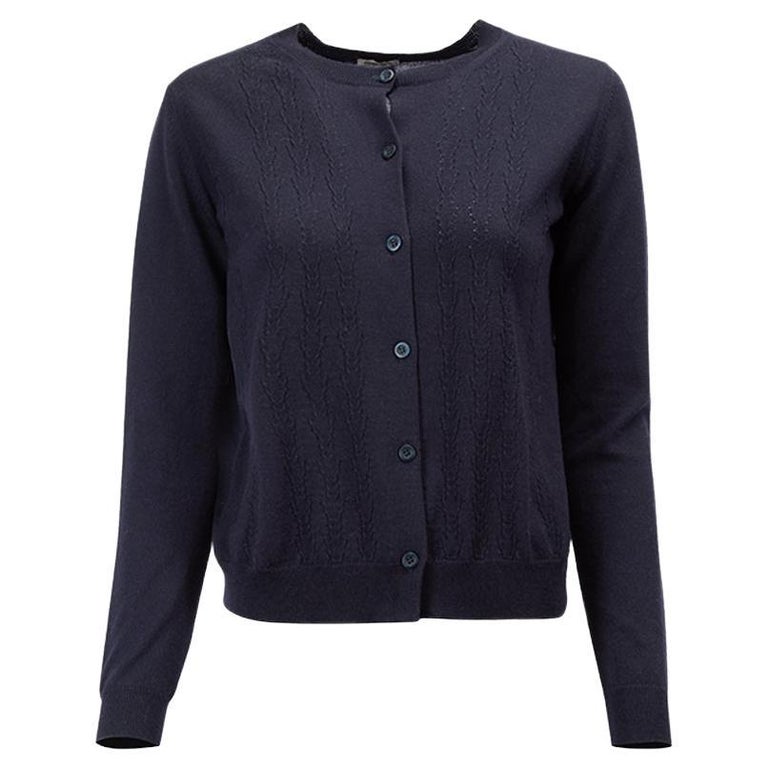The Purpose of Compression Socks
Compression socks aim to improve blood flow in your legs. They apply gentle pressure. This pressure can reduce discomfort and swelling.
How Compression Socks Work
Compression sock gently squeeze your legs. This helps veins move blood back to the heart. It fights gravity and aids circulation.
Benefits for Athletes and Active Individuals
Athletes wear compression sock to recover faster from workouts. Improved circulation speeds up recovery. These socks also reduce muscle soreness after exercise. Active people may find them helpful for endurance and performance.
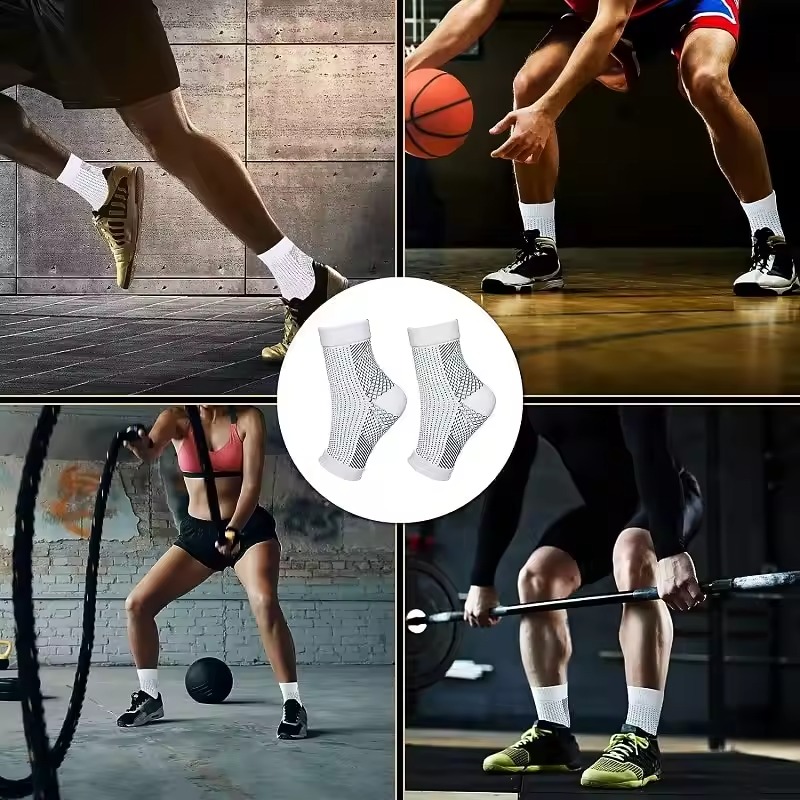
Compression Socks and Sleep Quality
Good sleep quality is essential for health and well-being. Compression sock might influence this by affecting circulation.
The Impact on Circulation During Sleep
When you sleep, your body enters a restful phase. Circulation naturally slows down. Wearing compression sock to bed could help maintain blood flow. This may prevent blood from pooling in the extremities. ‘Should you sleep in compression socks?’ is a common question. Some suggest it aids in overall circulation during sleep, potentially leading to better rest quality.
Can Compression Socks Help with Restless Legs Syndrome?
Restless Legs Syndrome (RLS) causes discomfort and an urge to move the legs at night. It can disrupt sleep. Compression socks may lessen these symptoms by enhancing blood flow. Consistent use could reduce the frequency of RLS episodes. This can lead to more peaceful sleep and better daytime function.
Potential Risks and Disadvantages
While compression sock come with many benefits, it’s crucial to consider possible drawbacks as well. Even a good thing can have downsides, especially when misused or overused.
Is It Safe to Wear Compression Socks While Sleeping?
Generally, wearing compression sock for prolonged periods, including overnight, is safe. However, it is essential to use the correct type and fit. Tight socks or wrong usage can lead to issues. Always consult with a healthcare provider before making such changes to your routine. They can help determine if it’s safe for your specific health needs.
Common Complaints and Issues
Some users report discomfort when wearing compression socks to bed. This could include sensations of overheating or constriction. Beware of the potential for skin irritation or pressure sores. If you notice any pain, numbness, or swelling, it’s time to reevaluate. These signs could indicate that the compression level is too high or the fit is incorrect. Continuous monitoring and careful selection of the right compression level are key to avoiding these complaints.
Choosing the Right Compression Socks for Sleep
Choosing the right compression socks for sleeping is important to maximize benefits and minimize risks.
Factors to Consider
When selecting compression socks for sleep, consider the following factors:
- Compression Level: The amount of pressure should be enough to aid circulation but should not cause discomfort. Consult with a healthcare provider for recommendations.
- Sock Length: Knee-high socks are common, but thigh-highs or full tights might be recommended for certain conditions.
- Material: Look for breathable fabrics to prevent overheating and moisture build-up.
- Fit: Ensure they are snug but not overly tight. An improper fit can lead to issues such as skin irritation.
Different Types and Levels of Compression
Compression socks come in varying types and levels:
- Mild Compression (8-15 mmHg): Best for those new to compression wear. It’s gentle and offers minimal pressure.
- Moderate Compression (15-20 mmHg): Often recommended for daily wear. It can relieve minor swelling and fatigue.
- Firm Compression (20-30 mmHg): Ideal for those with specific medical conditions as prescribed by a doctor.
- Extra Firm Compression (30-40 mmHg): Used for severe cases of swelling and certain medical conditions, under medical advice.
Remember to consult a healthcare professional to determine which type and level are best for your individual needs.
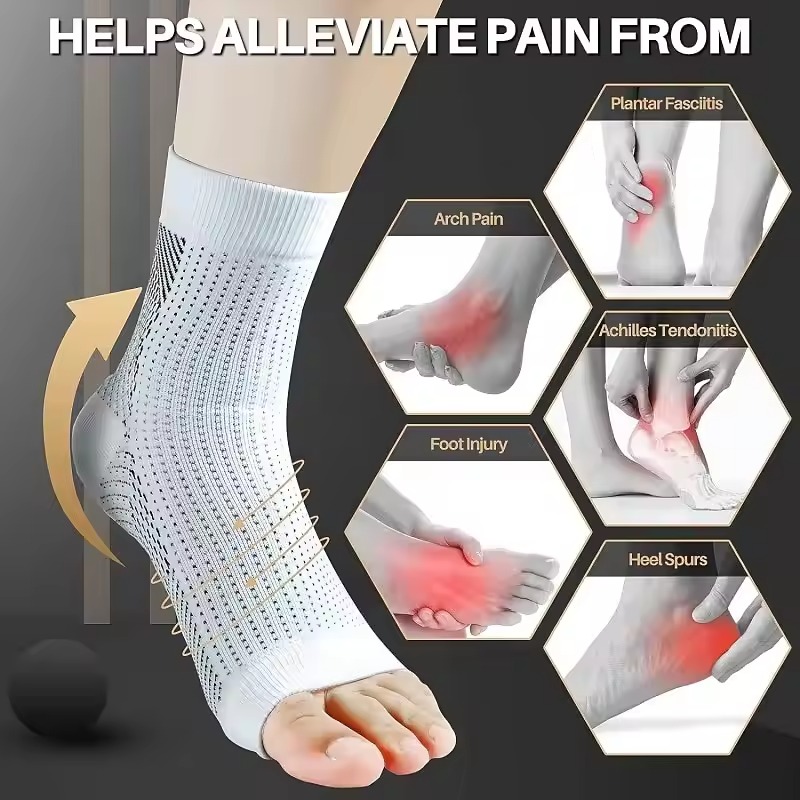
Expert Opinions on Sleeping in Compression Socks
When exploring ‘should you sleep in compression socks’, expert input is invaluable.
Medical Professionals’ Recommendations
Doctors and sleep specialists often weigh in on this topic. They focus on patient-specific advice. Common guidance includes using mild to moderate compression for sleeping. They caution against too-tight socks. They recommend socks for those with circulation issues. Always get a formal evaluation before starting use.
Insights from Sports Therapists
Sports therapists see compression sock as a recovery tool. They suggest that wearing them during sleep can support muscle recovery. They emphasize the importance of the right fit and compression level. Sports therapists advise listening to your body. If discomfort arises, they recommend reassessing your choice of compression socks.
Alternatives to Compression Socks for Sleep
While compression socks offer benefits, they’re not the only way to boost circulation for a good night’s sleep.
Other Methods to Improve Circulation and Sleep Quality
Improving sleep quality and circulation doesn’t always require compression socks. Here are some alternatives:
- Elevate your legs: Place a pillow under your legs. This simple act can enhance blood flow.
- Stay hydrated: Drink plenty of water. Good hydration helps with circulation.
- Regular exercise: Even a brisk walk can boost circulation. It also improves overall sleep patterns.
- Massage: Gentle leg massages before bed can increase circulation.
- Warm baths: They relax muscles and arteries. This relaxation can improve blood flow.
All these methods can lead to better sleep. Pair them with a healthy lifestyle for the best results. It’s about finding what works best for you.
When to Choose Alternatives Over Compression Socks
Sometimes, compression socks might not be suitable. Here’s when to consider alternatives:
- Skin issues: If you have sensitive skin or allergies, non-compressive methods might be better.
- Discomfort: If compression socks make you uncomfortable, try elevation or massage.
- Heat: On hot nights, compression socks might feel too warm. Cooling the room or using breathable bedding can help instead.
- Consultation advice: Your healthcare provider may suggest other options based on your health.
Remember, always listen to your body and your healthcare provider’s advice when making sleep-related decisions.
Frequently Asked Questions
Navigating the subject of compression socks for sleeping, people often have many questions. It’s helpful to address these to guide proper usage and expectations.
Addressing Common Concerns and Myths
There are several myths surrounding the use of compression sock at night. Let’s debunk some:
- Myth: Compression sock can cut off circulation if worn overnight. Fact: When fitted correctly, they can improve circulation.
- Myth: Only athletes benefit from compression sock. Fact: Anyone with circulation issues can benefit.
- Myth: Compression socks are uncomfortable to sleep in. Fact: With the right fit and compression level, they can enhance sleep comfort.
Remember, always consult a healthcare professional to ensure compression sock are right for you.
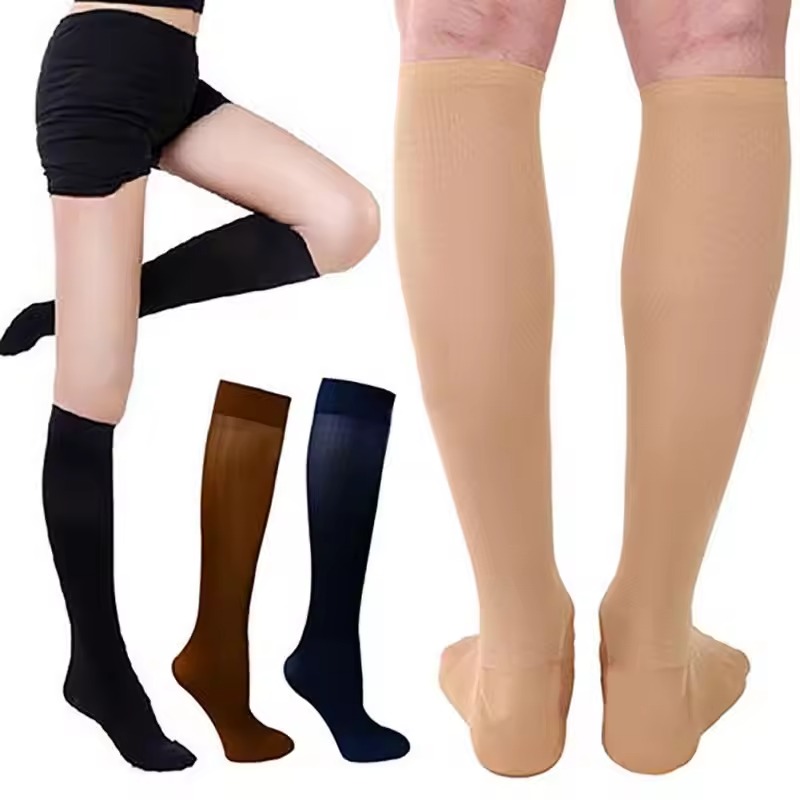
Tips for First-Time Users
If you’re considering trying compression sock for sleep for the first time, keep these tips in mind:
- Start with mild compression. This level is more comfortable, especially if you’re not used to wearing them.
- Wear them a few hours before bed. This helps you get used to the feeling and ensures comfort.
- Check the fit. See that they aren’t too tight or too loose, which can cause issues.
- Monitor your experience. Take note of how your legs feel in the morning and adjust if necessary.
Following these tips can help ensure a positive experience with using compression socks for sleep.
Conclusion
Compression socks can be a valuable tool for improving circulation and enhancing sleep quality, but it’s important to use them correctly. By addressing common myths, following tips for first-time users, and considering additional factors like material and maintenance, you can ensure a positive and effective experience. Always consult with a healthcare professional to determine if compression sock are right for you and to get personalized recommendations.

